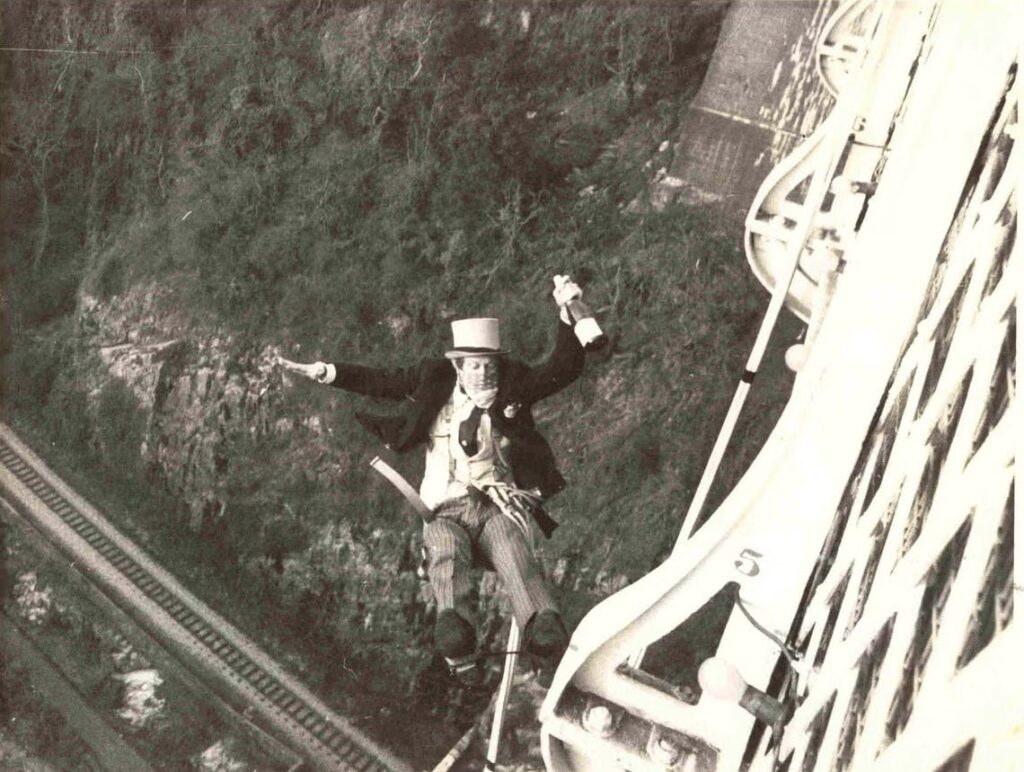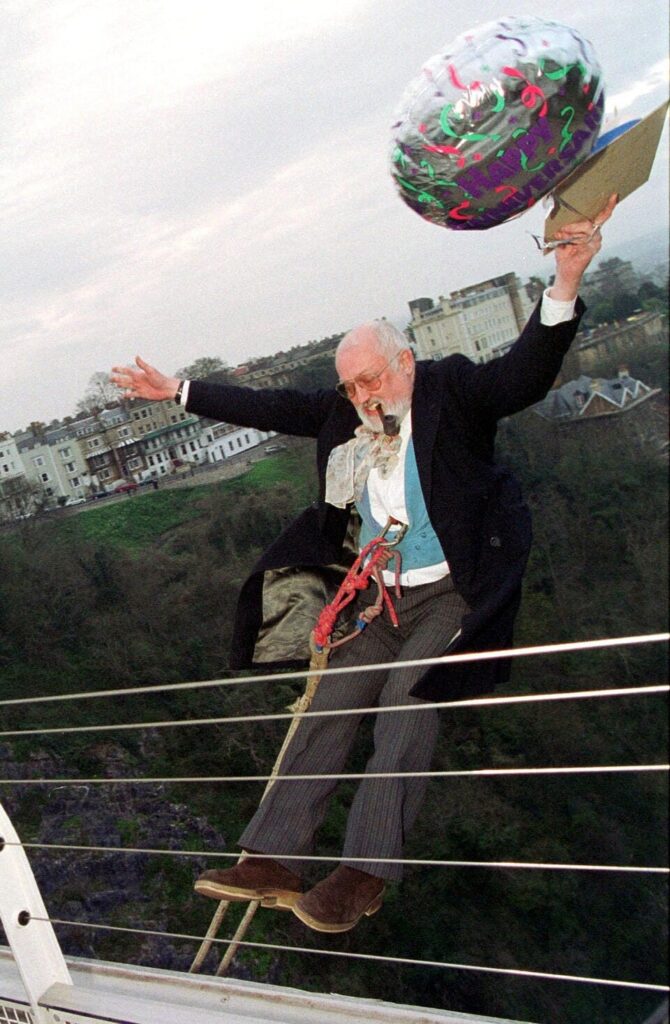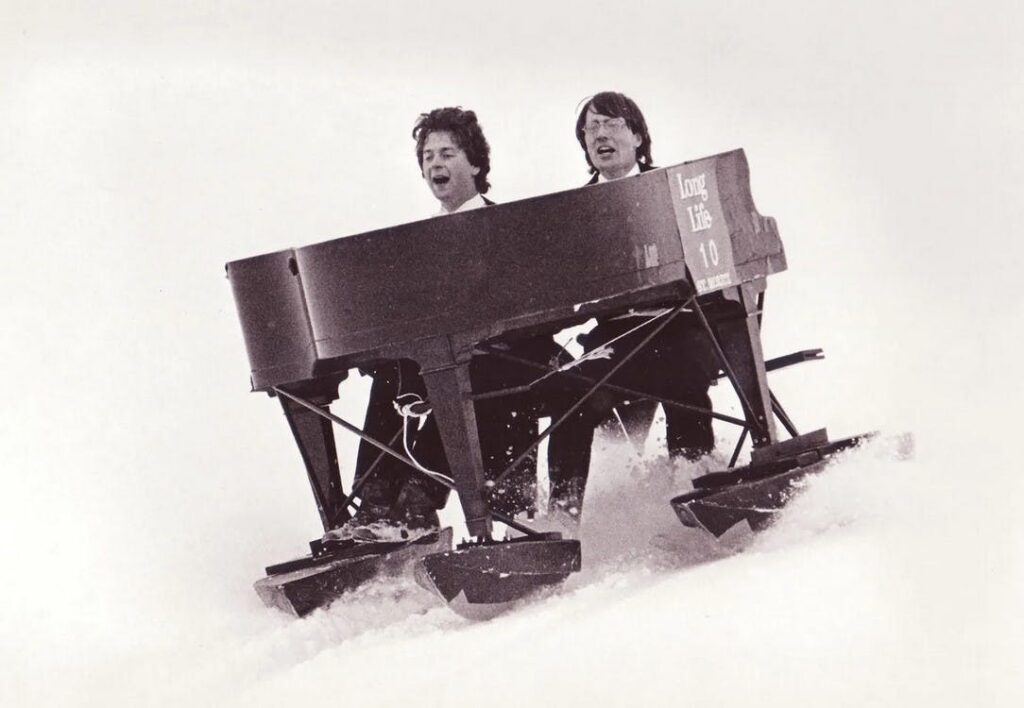How a Group of Oxford Students Changed the Game
In the late 1970s, a group of adventurous Oxford University students grew tired of the rigid and bureaucratic nature of traditional sports. They craved something more thrilling, more daring, something that would push them to their limits and beyond. And so, the Dangerous Sports Club was born, led by the charismatic and fearless risk-taker David Kirke. Little did they know that their quest for adventure would revolutionize the world of extreme sports. It would give birth to the global phenomenon of bungee jumping, forever changing the landscape of adrenaline-fueled pursuits.

The Birth of the Dangerous Sports Club
It all started in 1977 when David Kirke and his friend Ed Hulton visited the legendary Cresta Run skeleton track in Switzerland. They were disappointed by the strict regulations and high costs. The decision was made to create their own club that would push the boundaries of what was possible in the world of sports. They teamed up with Chris Baker. He was a rebellious ski bum who was tinkering with hang gliders, and the Oxford Dangerous Sports Club was born.
The club’s mission was simple: to seek liberation through confronting fears and bureaucracy, and to create affordable adventures for daredevils like themselves. They started by launching themselves and strange objects down majestic mountain slopes, using whatever means they could find. From shopping cart races down steep streets to launching themselves off ski jumps on makeshift sleds, the club’s early antics were a testament to their irreverence and love for danger.
The Bungee Jumping Revolution
On April 1, 1979, the Dangerous Sports Club made history. They pulled off a stunt that would change the world of extreme sports forever. David Kirke and three of his friends, dressed in formal top hats and tails, leapt one-by-one off the iconic 245-foot Clifton Suspension Bridge in England. They did this with elastic cords tied around their waists. This was the first ever recorded “bungee jump,” and it captured the imagination of people around the world.
The police arrested and fined the Dangerous Sports Club for their stunt. However that didn’t stop their bungee jumping exploits from going viral. The media quickly spread the news of their daring feats, inspiring countless imitators. Over the next decade, the Dangerous Sports Club staged increasingly spectacular bungee leaps off bridges and buildings. They were pushing the limits of what people thought was possible. Their actions inspired a generation of thrill-seekers to follow in their footsteps. By 1982, the club had made bungee jumping their trademark extreme activity. Soon, it spread to every corner of the globe.

Pushing the Boundaries of Extreme Sports
The Dangerous Sports Club didn’t stop at bungee jumping. They continued to push the boundaries of what was possible in the world of extreme sports. They created elaborate stunts and hoaxes that captured the world’s attention and challenged the status quo. In 1986, David Kirke made headlines around the world when he floated across the English Channel clutching a cluster of helium-filled party balloons shaped like kangaroos. This daring feat inspired budding adventurers and thrill-seekers around the world, even as it attracted legal prosecution for aviation violations.
But perhaps the most notorious and memorable stunts in the club’s history involved careening down alpine slopes on a variety of bizarre and unexpected objects. They started with traditional sleds and skis. However, they quickly progressed to more outlandish contraptions. This included things such as spider men on eight sets of skis, plush teddy bears, grand pianos, antique bathtubs, full dining room sets, and even double-decker London buses. These spectacular crashes and daring feats of physics and engineering dazzled audiences. It also cemented the club’s reputation as the pioneers and innovators of extreme sports.

the Dangerous Sports Club Ski race. St. Moritz. 1983.
The club’s antics weren’t just about the thrill of the moment, however. They were also a commentary on the state of society and the need for individuality and self-expression in an increasingly conformist world. By pushing the boundaries of what was possible and challenging the status quo, the Dangerous Sports Club was making a statement about the importance of living life to the fullest and embracing the unknown.
The Legacy of the Dangerous Sports Club
As the 1990s dawned, the Dangerous Sports Club began to face challenges that threatened its very existence. Financial difficulties, legal troubles, and internal disputes took their toll, and the club’s once-tight support structure began to unravel. David Kirke found himself in legal hot water, facing fraud charges brought by jilted corporate sponsors, and key members resigned over creative differences and copyright disputes.
But even as the club itself faded into history, its legacy lived on. It is still inspiring countless imitators and spawning a global industry of extreme sports and adventure tourism. The extreme sports they pioneered, from bungee jumping to ski stunts, had captured the world’s imagination. It has become a cultural phenomenon, with millions of people around the world participating in these activities and pushing themselves to the limit in pursuit of the ultimate thrill.
Yet the story of the Dangerous Sports Club is also a cautionary tale. One that highlights the dangers of unregulated extreme sports and the importance of proper safety measures and training. In 2002, a tragic accident claimed the life of a Bulgarian student named Dino Yankov during a stunt involving a medieval trebuchet. It was a sobering reminder of the risks inherent in these activities and the need for responsible oversight and regulation.

the Saint Moritz slopes on a dining table
Bringing Extreme Sports to the Masses
In the end, the Oxford Dangerous Sports Club will be remembered as the pioneers who brought extreme sports to the masses, the mavericks who dared to dream big and push the boundaries of what was possible. Their bold originality, irreverent spirit, and willingness to take risks in pursuit of their passions changed the world of sports forever, and their legacy continues to inspire new generations of thrill-seekers and adventurers around the world.

But perhaps more importantly, the Dangerous Sports Club will be remembered as a testament to the human spirit, to the idea that anything is possible if you have the courage and the determination to pursue your dreams. They showed us that life is meant to be lived to the fullest, that we should embrace the unknown and the unexpected, and that sometimes the greatest rewards come from taking the biggest risks.



